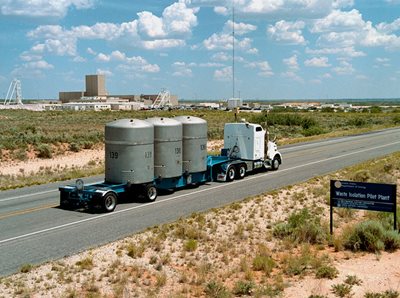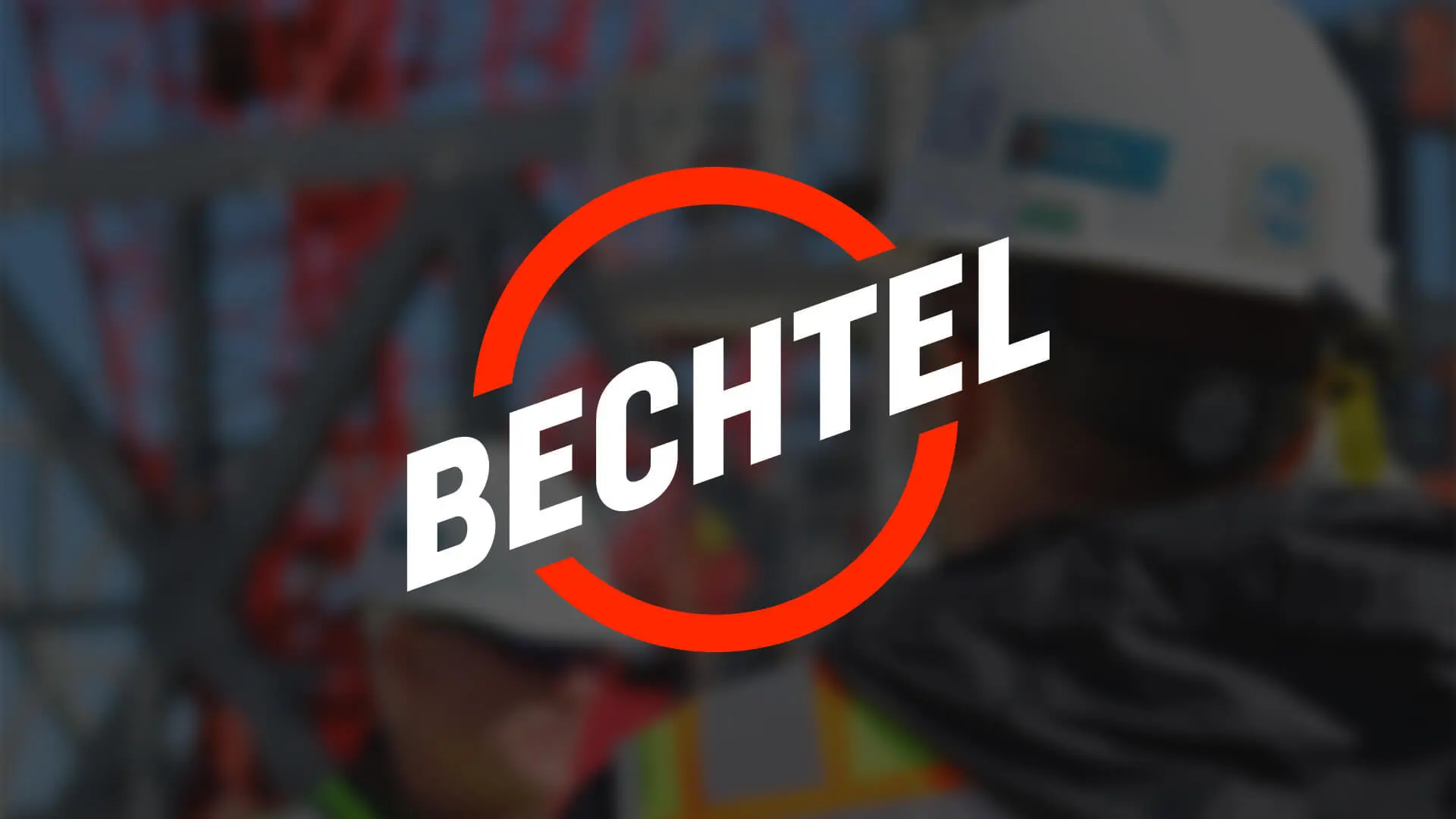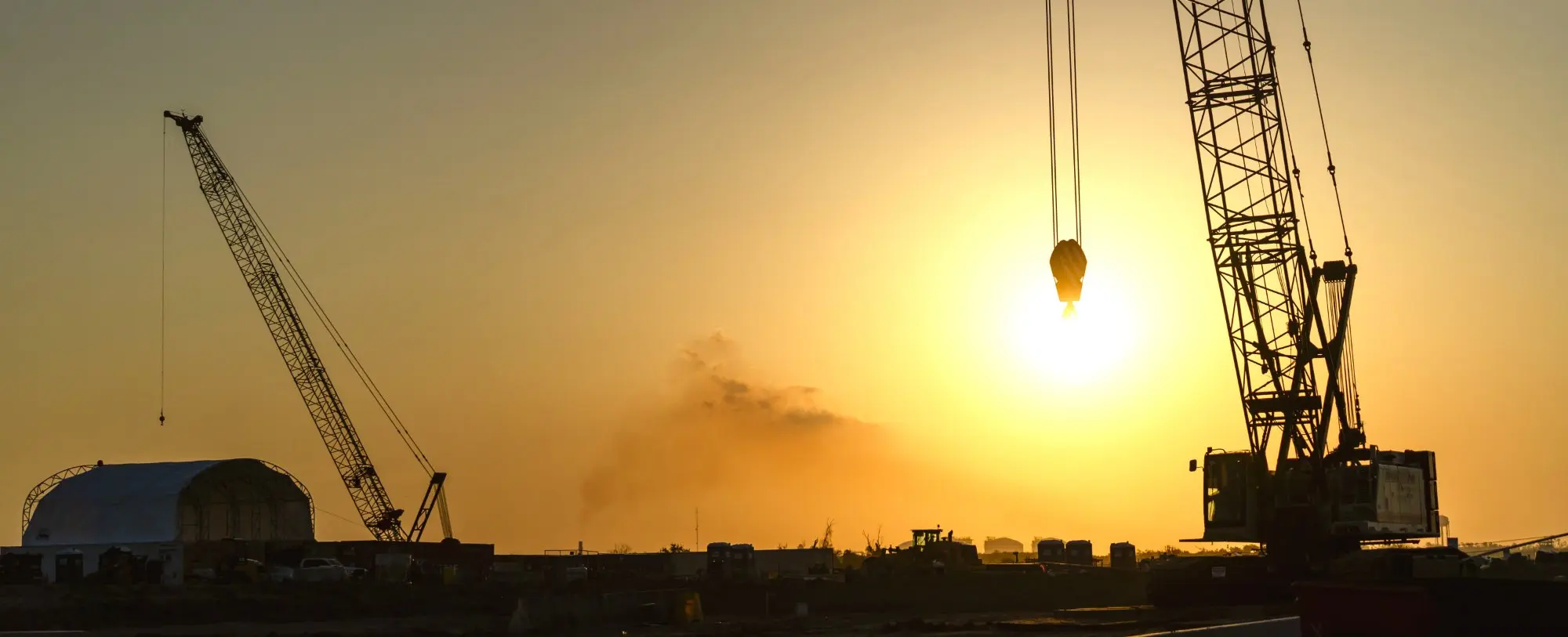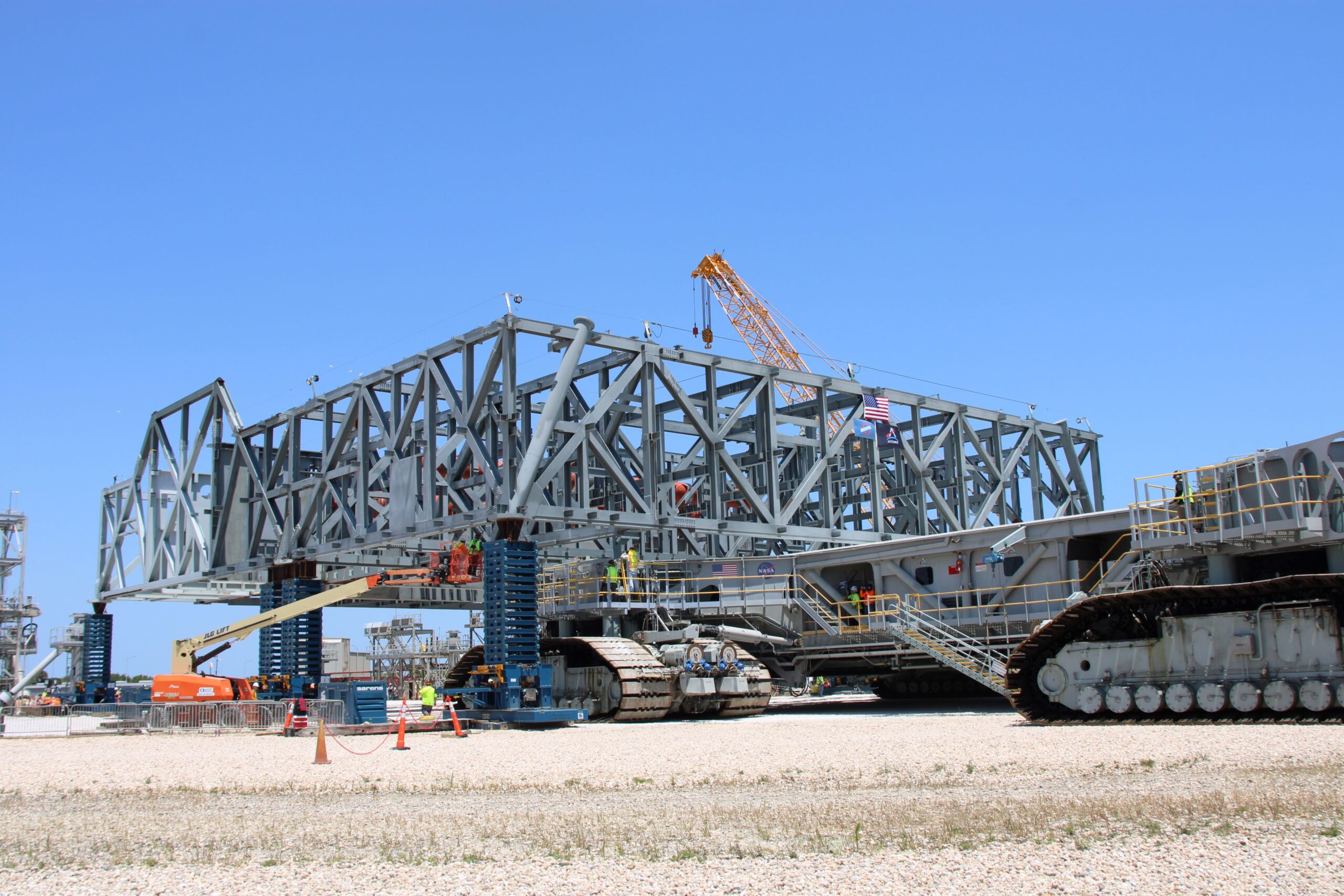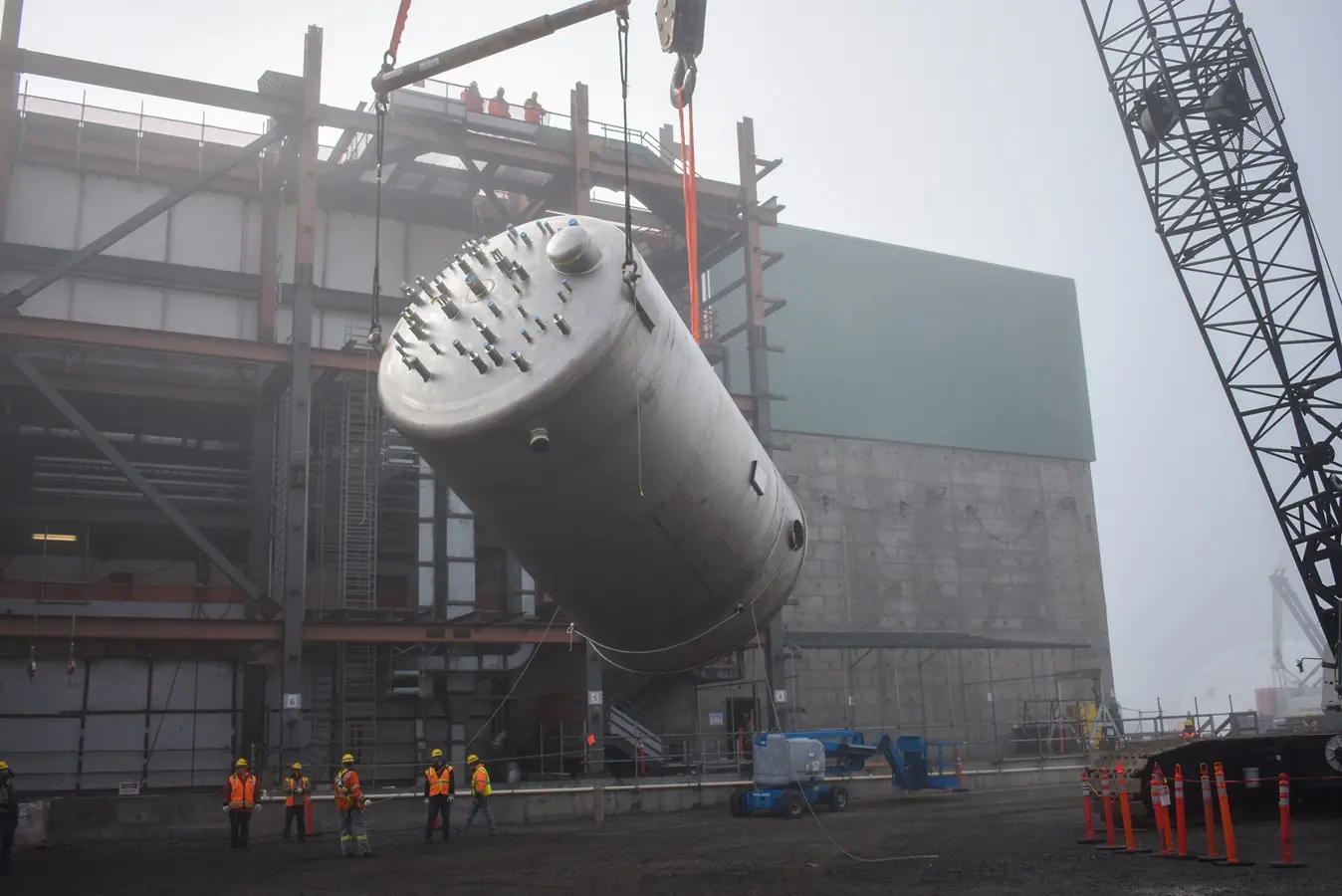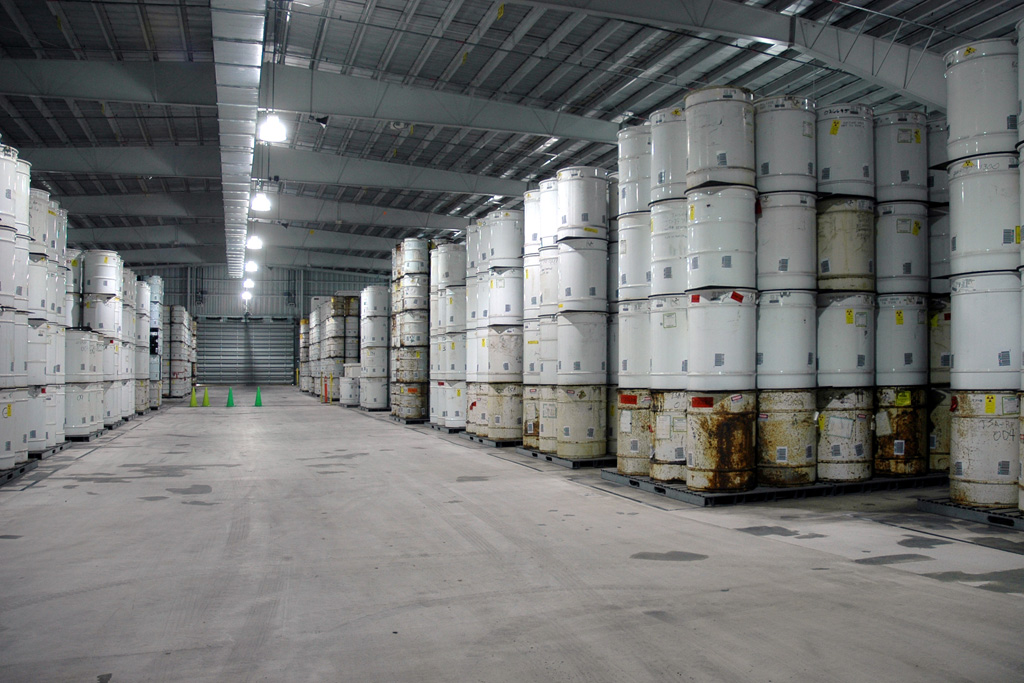December 4, 2023
Bechtel Completes First Container Pour at Vitrification Plant in Washington State
Bechtel announced today that it has successfully completed the first set of test glass pours into a stainless-steel storage container designed to hold vitrified radioactive and chemical waste. This is a critical step in the Department of Energy’s mission to treat waste in southeastern Washington state.
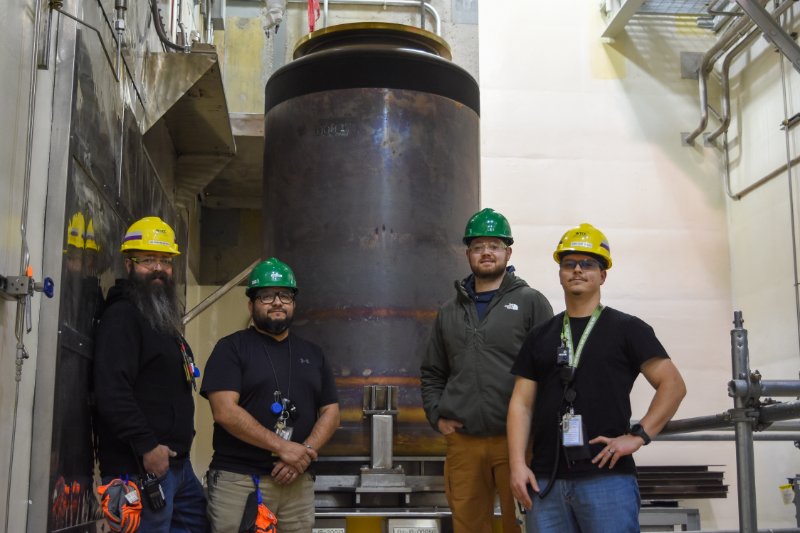 Project craft professionals stand in front of the first 7.5-foot-tall and 4-foot-wide stainless-steel container filled with molten test glass. Attendees at today’s event were able to leave their mark on the milestone by signing the container, which will be stored locally to mark this significant step toward protecting the nearby Columbia River.
Project craft professionals stand in front of the first 7.5-foot-tall and 4-foot-wide stainless-steel container filled with molten test glass. Attendees at today’s event were able to leave their mark on the milestone by signing the container, which will be stored locally to mark this significant step toward protecting the nearby Columbia River.
The Bechtel-designed Waste Treatment and Immobilization Plant is a one-of-a-kind vitrification facility that will use two melters to treat low-level chemical and radioactive waste and protect the nearby Columbia River from waste dating back to World War II and the Cold War. Learn more about Bechtel’s role in the project here.
Earlier this summer, the Bechtel team heated the first of the two 300-ton melters in the Low-Activity Waste (LAW) Facility to 2,100 degrees Fahrenheit. Once at that operating temperature, 30,000 lbs. of frit, or small glass beads sourced from a local business, were added to the melter to form a pool of molten test glass. Today, the Bechtel team celebrates the successful filling of the first container with clean test glass, marking a major milestone for the project.
Project Director and Bechtel Senior Vice President Brian Hartman said: “The Bechtel team has made history by filling the first stainless-steel container with molten test glass from the world’s largest nuclear waste melter. This accomplishment stands as a testament to our unwavering dedication to safety, excellence, and collaboration. Our team has worked tirelessly to achieve this milestone. Their tenacity and dedication are truly inspiring.”
The test glass poured is “clean,” which means it only includes the molten frit with no chemical simulants or radioactive waste.
The first of the specially designed stainless-steel containers that will eventually hold vitrified low-activity chemical and radioactive tank waste has now completed its journey through the LAW Facility.
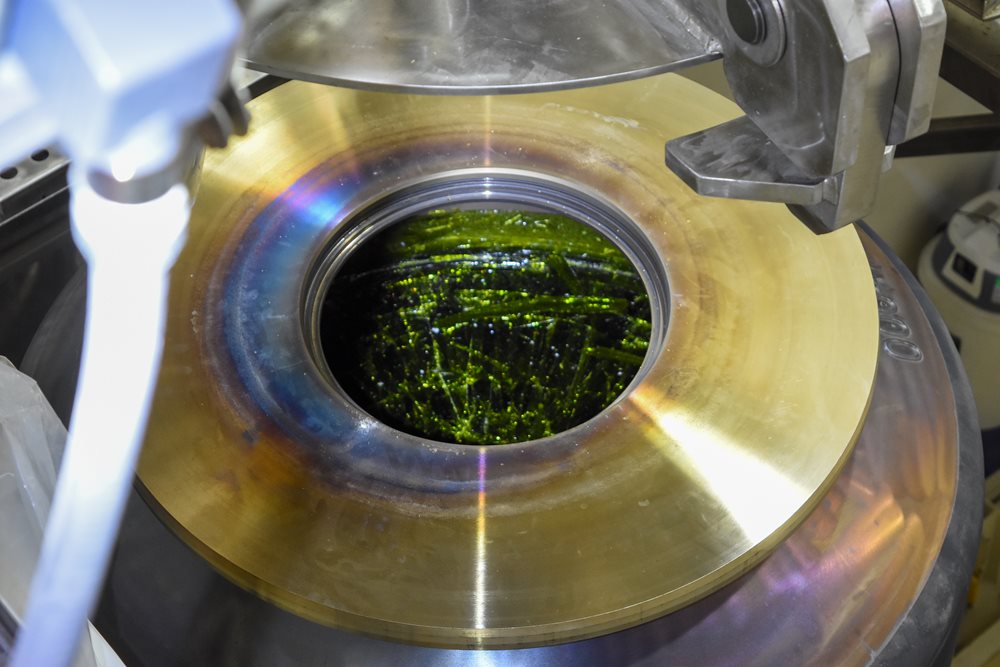
Looking into the first container that was filled with clean glass at the Waste Treatment Plant in Washington State. Bechtel colleagues have been working to build a plant that will treat chemical and radioactive waste stored at the Hanford site. Today that hard work was celebrated by a special event at the Low-Activity Waste (LAW) Facility.
President of Bechtel National, Inc., Dena Volovar said: “I am immensely proud of our team for the attention to detail and dedication to safety that has led them to this milestone. This sort of focus will be vital as the team begins the rigorous cold and hot commissioning processes, and applying lessons learned from the heatup of the first melter to the second. The mission to clean up waste and protect the local community and environment is one Bechtel is proud to support.”
During the cold and hot commissioning process, tests will be conducted using non-radioactive simulants to ensure the LAW Facility is operating as expected.
Fast Facts:
- Each stainless-steel container measures 7.5 feet tall and 4 feet wide.
- When filled, each stainless-steel container will weigh approximately 6.8 metric tons.
- Once fully operational, the LAW Facility will process 5,300 gallons of tank waste each day and fill 3.5 containers each day.
- The containers of vitrified low-activity waste will be trucked from WTP to the Hanford Site’s Integrated Disposal Facility.
- Vitrification Defined: Vitrification is a process to convert chemical and radioactive waste into an immobilized form safe for storage or disposal by mixing the waste with glass-forming materials and heating it to 2,100 degrees Fahrenheit.
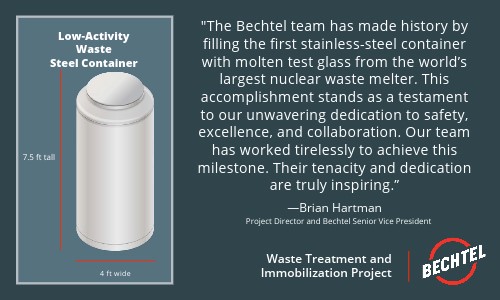
About Bechtel
Bechtel is a trusted engineering, construction and project management partner to industry and government. Differentiated by the quality of our people and our relentless drive to deliver the most successful outcomes, we align our capabilities to our customers’ objectives to create a lasting positive impact. Since 1898, we have helped customers complete more than 25,000 projects in 160 countries on all seven continents that have created jobs, grown economies, improved the resiliency of the world’s infrastructure, increased access to energy, resources, and vital services, and made the world a safer, cleaner place.
Bechtel serves the Energy; Infrastructure; Manufacturing & Technology; Mining & Metals; and Nuclear, Security & Environmental markets. Our services span from initial planning and investment, through start-up and operations. www.bechtel.com
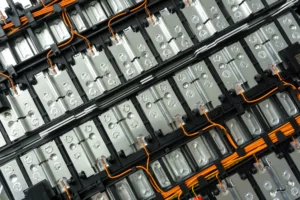
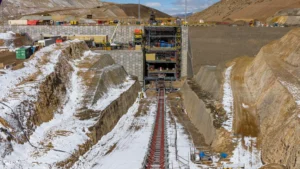

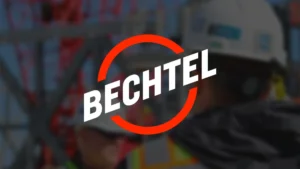
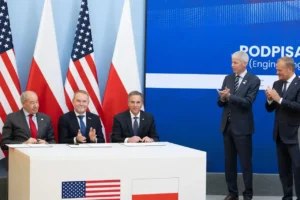
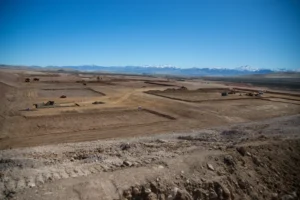
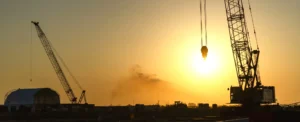

 Project craft professionals stand in front of the first 7.5-foot-tall and 4-foot-wide stainless-steel container filled with molten test glass. Attendees at today’s event were able to leave their mark on the milestone by signing the container, which will be stored locally to mark this significant step toward protecting the nearby Columbia River.
Project craft professionals stand in front of the first 7.5-foot-tall and 4-foot-wide stainless-steel container filled with molten test glass. Attendees at today’s event were able to leave their mark on the milestone by signing the container, which will be stored locally to mark this significant step toward protecting the nearby Columbia River.


